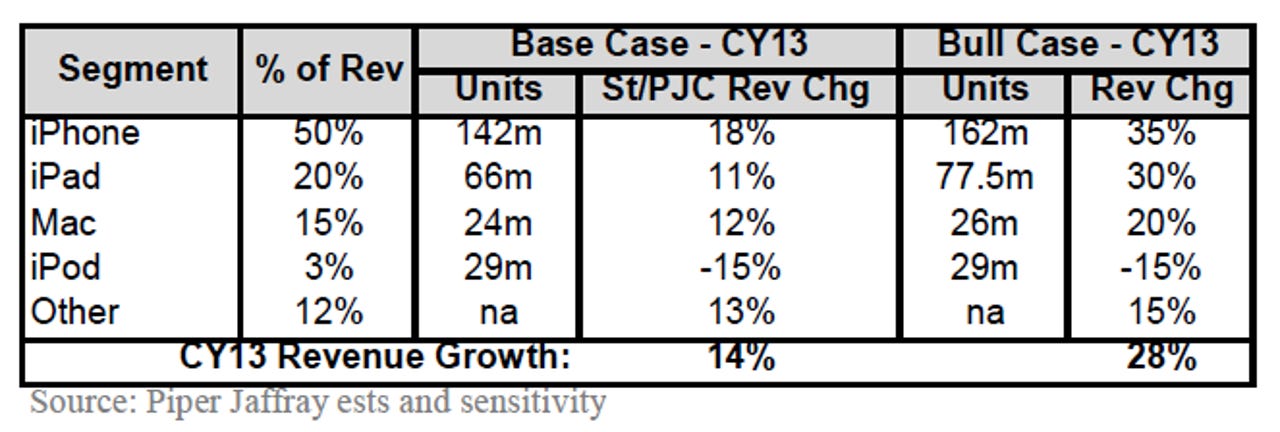Apple's next two years: Will there be an iPad high-low strategy?

Apple's iPad 3 is expected to drive revenue growth and alleviate competitive pressure from the likes of Amazon, but the real win for the company could be a strategy to address both higher and lower price points, according to Gene Munster, an analyst at Piper Jaffray.
On Tuesday, Munster set his calendar 2012 and 2013 expectations. Keep in mind that Apple's fiscal year doesn't match the calendar. Apple's fiscal 2012 ends on Sept. 30. The short version is that Munster expects an iPhone 5 and iPad 3 to drive performance.
Here are Munster’s scenarios for Apple units and upside:
Just like today, Apple's iPhone will drive revenue and profit growth. A TV is also possible. Munster said buzz about an iPhone 5 will pick up early in the year. Cheaper models will drive unit growth and iPhone revenue growth will be between 18 percent to 35 percent.
More notable is the iPad scenario. Will Apple move to address lower priced tablets? Munster said:
Our model currently assumes iPad 3 will simply replace iPad 2; however, if Apple expands the iPad lineup to both higher and lower price points, the new iPads could support growth well above our current estimates. We do not have any solid data points regarding the iPad 3 or the future of the iPad lineup, but we expect the next iPad(s) to launch in spring 2012 (likely March or April 2012). While there are many existing iPad SKUs, there is really only one current iPad (with a choice of capacity, color, and wireless technology). We expect Apple to expand the iPad lineup either with the launch of the iPad 3 (2012) or iPad 4 (2013). We expect the iPad 3 to have a higher resolution 9.7" (same size) display. But Apple could charge the regular $499 entry-level price for the iPad 3 and lower the price of the iPad 2 in order to compete with recent, cheaper market entrants, like the Kindle Fire. Apple could also further differentiate the iPad 3 by adding a faster processor and Siri voice recognition technology to compel buyers to reach for the iPad 3. We do not expect Apple to launch a 7" iPad in 2012.
A few thoughts on Munster's take:
- The high-low strategy would follow the iPhone playbook, which features the 3GS (low), 4 (middle) and 4S (high-end). If Apple lowered the iPad 2 to $299 it would have a winner.
- 7-inch tablets are unproven, but I'm rethinking my theories for that form factor. The Kindle Fire is handy at that size.
- Apple TV gets a lot of play in the press, but I'm not convinced the all-in-one set will be a huge revenue driver. Apple TV will do well, but it's unclear whether the company can capture magic in a bottle. The TV market is fraught with risks.
